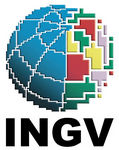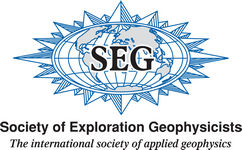About our R&D activities
Today most geophysical services companies use “factory standard” equipment & softwares, which are mainly developed for shallow targets. At Stratagem 974 we develop, enhance and create new instruments, protocols and programs in order to kick off the limits of such “ready-to-use” systems.
The seismic method often finds its limits on rough and remote areas. We therefore developed unconventional methods, including high-resolution Electrical Resistivity Tomography, Spontaneous Polarization and soil gazes measurements focused on deep targets, all with a high Signal to Noise ratio. This allows the construction of robust 2D and 3D models for complex buried structures.
Our R&D team is focused on the development of geophysical methods and instruments applied to the following fields:
I. Geothermy & volcanology:
We have made important efforts in the last 15 years to enhance the knowledge of hydrothermal systems on active volcanoes, including Piton de La Fournaise (Reunion Island), Soufrière (Guadeloupe), Vulcano & Stromboli (Italy) or El Misti (Peru)
II. Heavy oil reservoirs delineation:
For the mapping of tar sands in remote areas (an important challenge for geophysicists) Seismic methods being often inefficient, we have developed our own codes and equipments for ERT prospecting in order to obtain the best results on the field.
These development can also be used for:
1. Ore prospecting
Multidimensional modelling of ore bodies is a great challenge for mining companies but can help them save time and money on their drilling campaign programs. We have developed our own multi-method protocol in order to obtain the best results on the field
2. Water research
We are collaborating with NGOs and government agencies to help them solve this critical problem
3. Geo-hazards studies
Geophysics is the solution for maping layers and interfaces where constraints become critical. Our cooperation with IPGP and INGV members has recently moved from Eolian Islands to the Aquila where a first deep ERT survey (with a depth of investigation reaching 800 m!) was successfully achieved (January 2012) for mapping the bedrock in the “Valle dell Inferno” area.
Our mentors
Our team of dynamic scientists and engineers maintain a permanent link with high-level scientists in research institutes located worldwide. This collaboration is very important and produces regularly some papers into high impact-factors publications. To have a look at our mentors homepages or download our last papers, follow the links below.
André Revil – Colorado School of mines, USA
Anthony Finizola – Géosciences Reunion / IPGP, France
Tullio Ricci – INGV / Italy
Main recent papers
download them here
Revil A., Finizola A., Ricci T., Delcher E. & al, (2011). Hydrogeology of Stromboli volcano, Aeolian Islands (Italy) from the interpretation of resistivity tomograms, self-potential, soil temperature, and soil CO2 concentration measurements. Geophys. Journal. International, 186, 1078-1094, doi: 10.1111/j.1365-246X.2011.05112.x
Finizola A., Ricci T., Deiana R., Barde Cabusson S., Rossi M., Praticelli N., Giocoli A., Romano G., Delcher E., Suski B., Revil A. & al, (2010) Adventive hydrothermal circulation on Stromboli volcano (Aeolian Islands, Italy) revealed by geophysical and geochemical approaches: implications for general fluid flow models on volcanoes, Journal of Volcanology and Geothermal Research, 196, 111-119.








